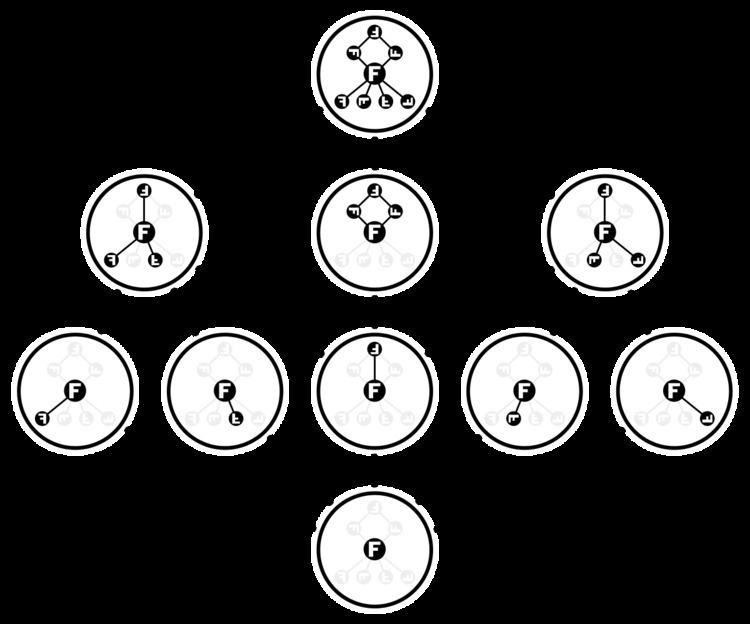 | ||
In mathematics, the lattice of subgroups of a group
Contents
Example
The dihedral group Dih4 has ten subgroups, counting itself and the trivial subgroup. Five of the eight group elements generate subgroups of order two, and two others generate the same cyclic group Z4. In addition, there are two groups of the form Z2 × Z2, generated by pairs of order-two elements. The lattice formed by these ten subgroups is shown in the illustration.
This example also shows that the lattice of all subgroups of a group is not a modular lattice in general. Indeed, this particular lattice contains the forbidden "pentagon" N5 as a sublattice.
Properties
For any A, B, and C subgroups of a group with A ≤ C (A subgroup of C) then AB ∩ C = A(B ∩ C); the multiplication here is the product of subgroups. This property has been called the modular property of groups (Aschbacher 2000) or (Dedekind's) modular law (Robinson 1996, Cohn 2000).
The Lattice theorem establishes a Galois connection between the lattice of subgroups of a group and that of its quotients.
The Zassenhaus lemma gives an isomorphism between certain combinations of quotients and products in the lattice of subgroups.
In general, there is no restriction on the shape of the lattice of subgroups, in the sense that every lattice is isomorphic to a sublattice of the subgroup lattice of some group. Furthermore, every finite lattice is isomorphic to a sublattice of the subgroup lattice of some finite group (Schmidt 1994, p. 9).
Characteristic lattices
Subgroups with certain properties form lattices, but other properties do not.
However, neither finite subgroups nor torsion subgroups form a lattice: for instance, the free product
The fact that normal subgroups form a modular lattice is a particular case of a more general result, namely that in any Maltsev variety (of which groups are an example), the lattice of congruences is modular (Kearnes & Kiss 2013).
Characterizing groups by their subgroup lattices
Lattice theoretic information about the lattice of subgroups can sometimes be used to infer information about the original group, an idea that goes back to the work of Øystein Ore (1937, 1938). For instance, as Ore proved, a group is locally cyclic if and only if its lattice of subgroups is distributive. If additionally the lattice satisfies the ascending chain condition, then the group is cyclic.
The groups whose lattice of subgroups is a complemented lattice are called complemented groups (Zacher 1953), and the groups whose lattice of subgroups are modular lattices are called Iwasawa groups or modular groups (Iwasawa 1941). Lattice-theoretic characterizations of this type also exist for solvable groups and perfect groups (Suzuki 1951).
